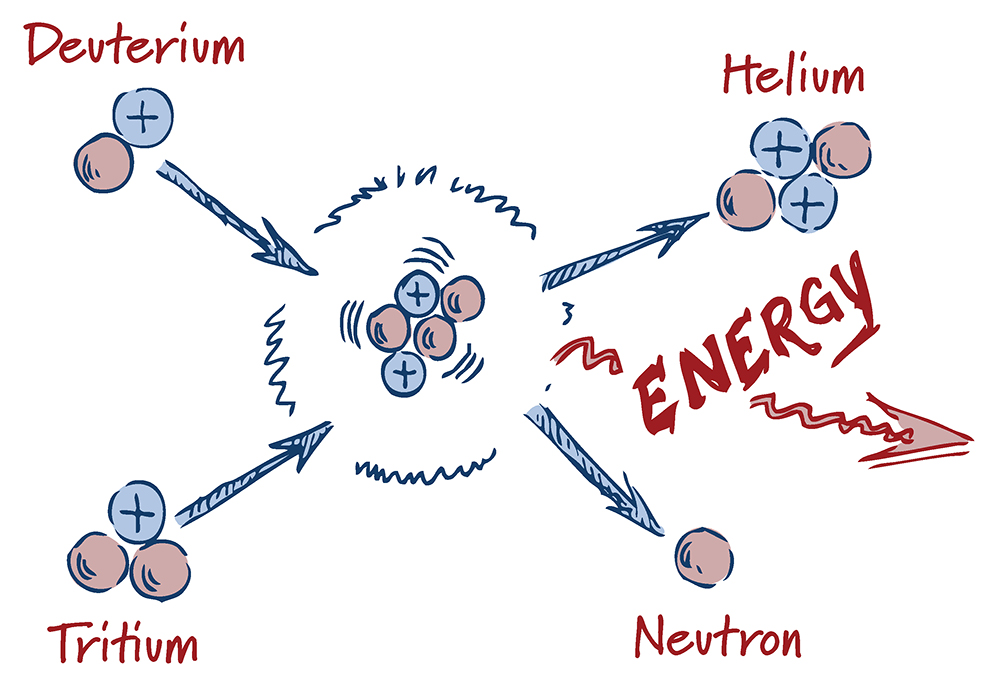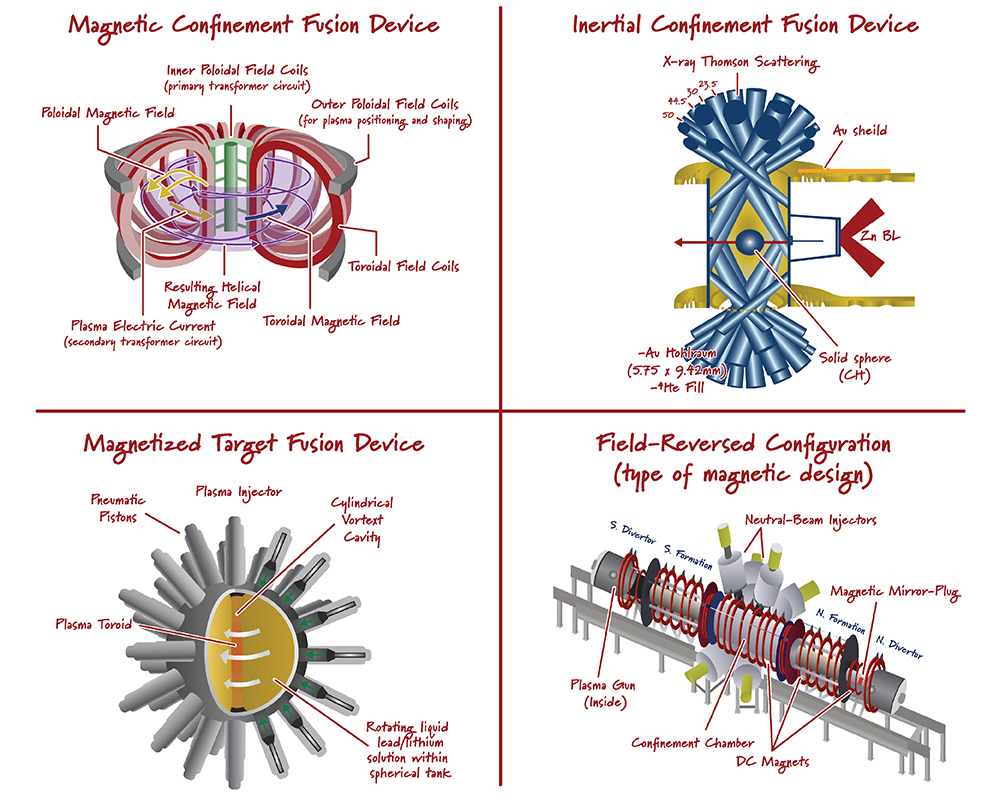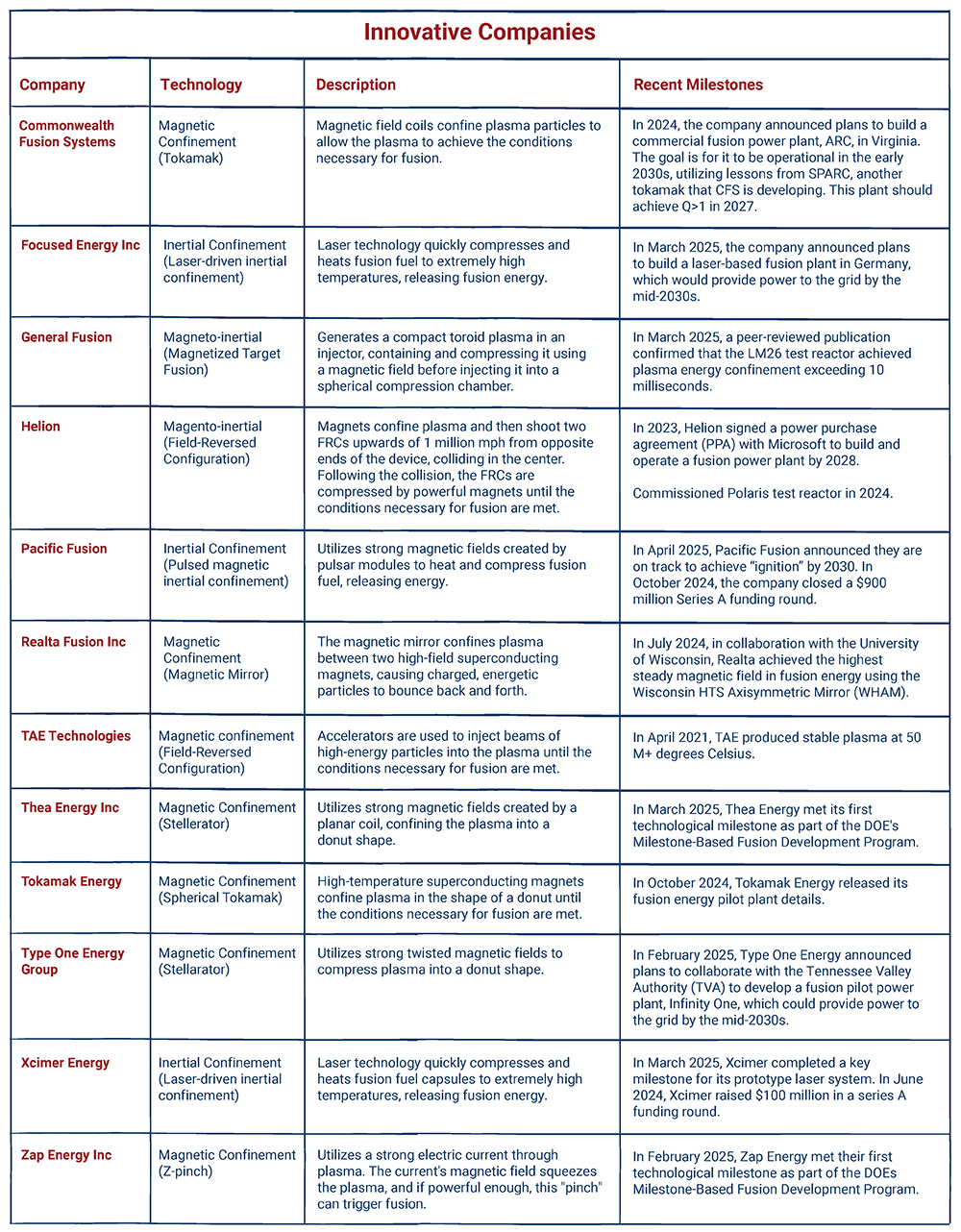
While these conditions are extreme, the low fuel volume means the reaction is safe at such high temperatures.
While recreating the conditions of stars here on Earth is no trivial task, there are many routes to making it happen: superconducting magnets, lasers or piston-driven pressure can force the atoms together to fuse under Earth’s conditions. The real challenge has been doing this efficiently so that the reaction produces more energy than it consumes.


Two U.S.–based fusion companies, Commonwealth Fusion Systems and Helion, announced construction of fusion power plants, delivering power to the grid as early as the 2030s. This follows significant private investment in the U.S. totaling more than $6 billion, and continued support from the government to build projects. This is creating a path towards commercialization. Still, the U.S. needs to continue to take action to support the fusion industry to maintain its leadership position, including:

The wider fusion community, both public and private, has seen concrete action in the last couple of years:
The combined efforts of both the public and private sectors have driven the fusion industry to the point where commercial fusion is now firmly on the horizon.
